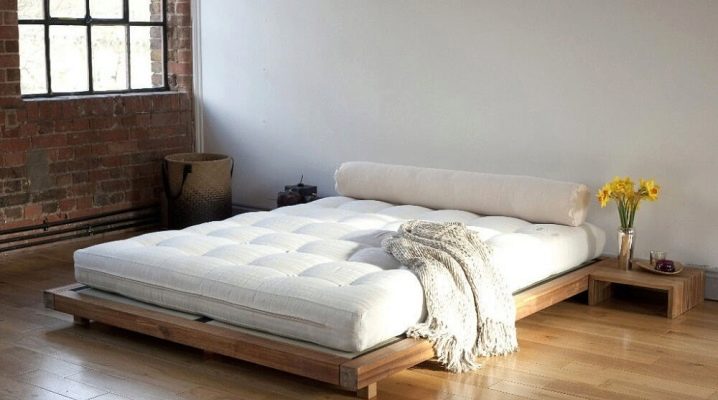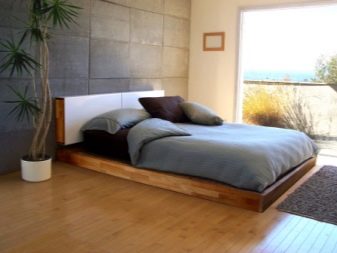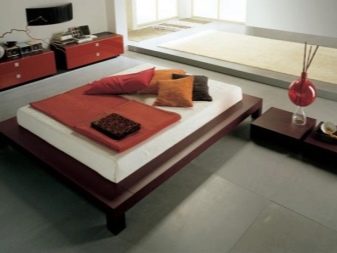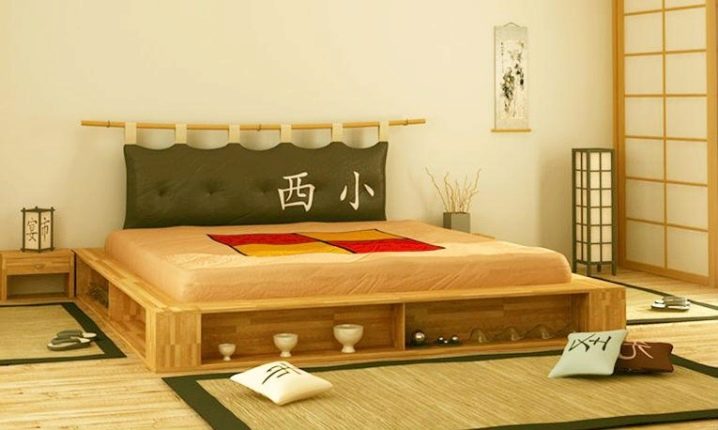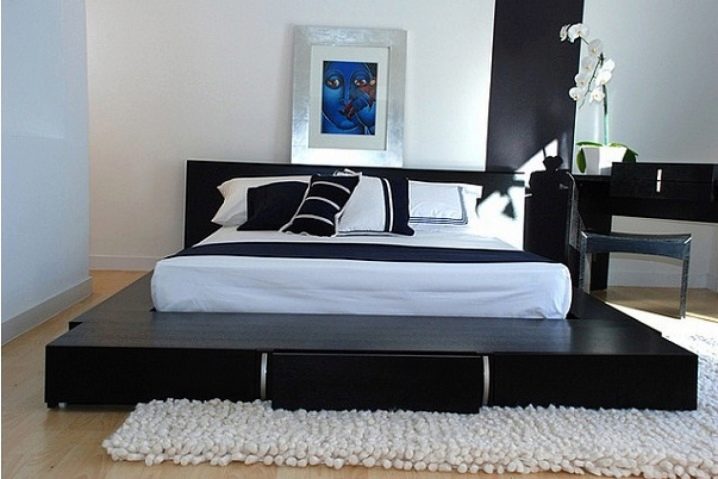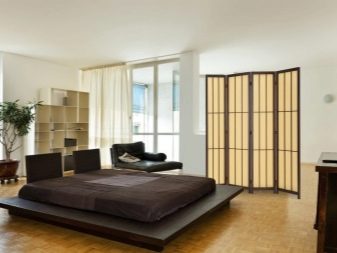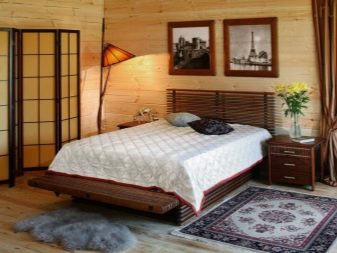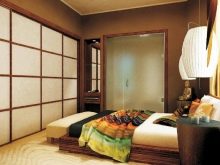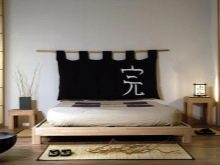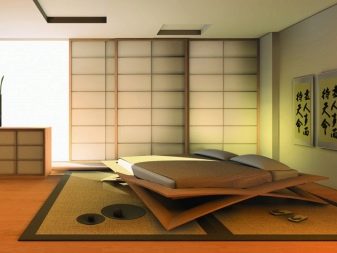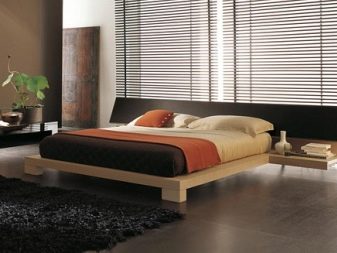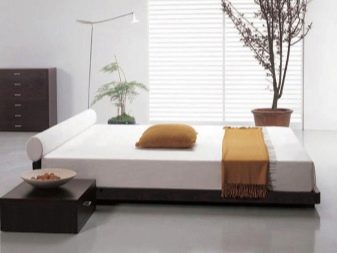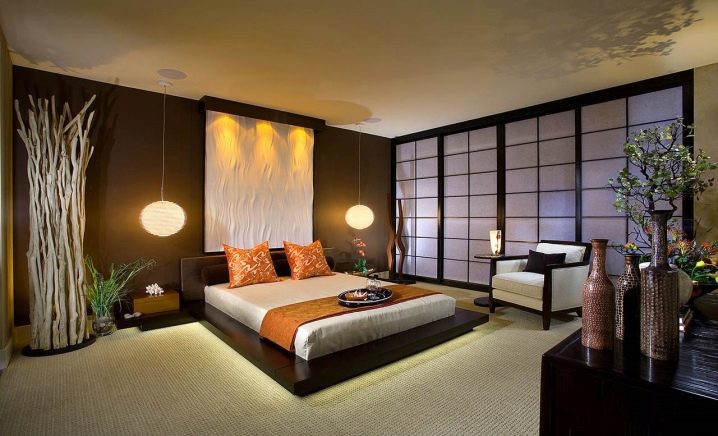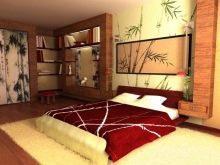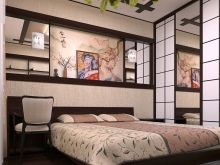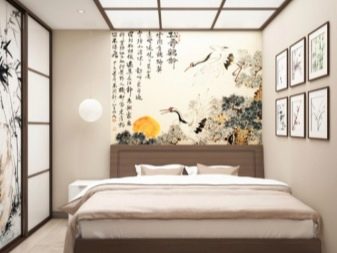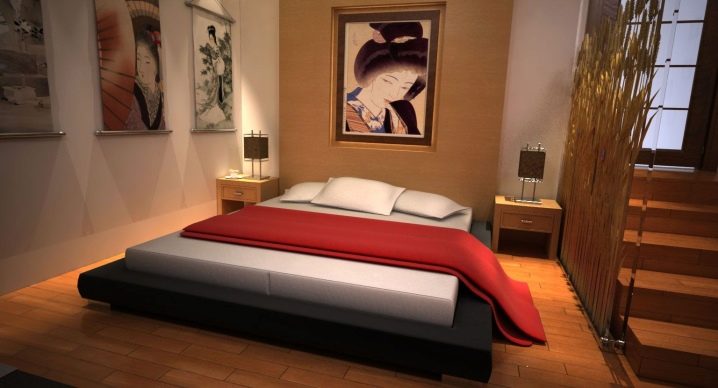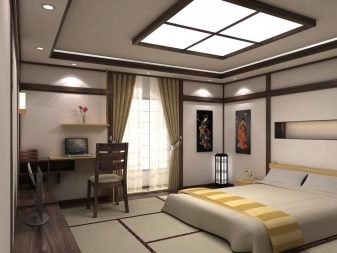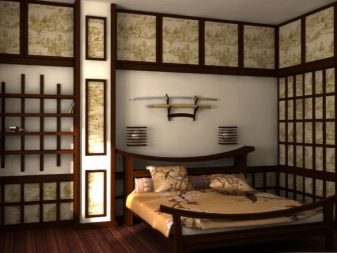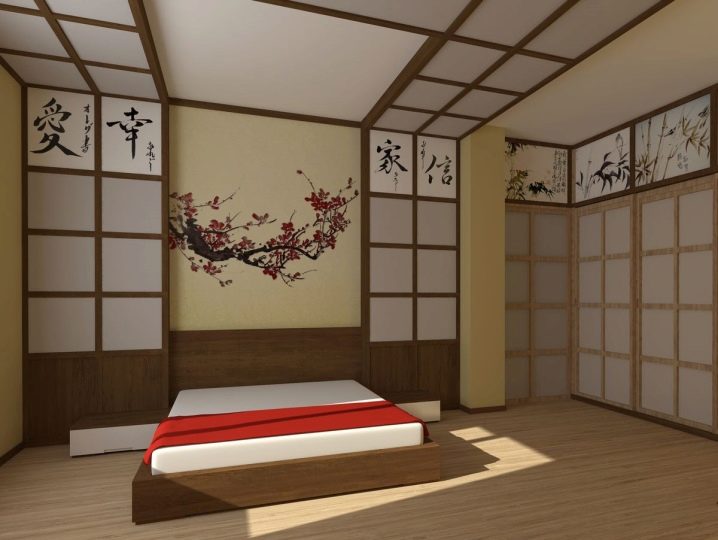Japanese-style beds
Traditional bedrooms in the Japanese style are distinguished by rigor and minimalism, they lack bright accessories and decorative elements. The center of attention in such bedrooms is a low and wide bed, which can often be the only piece of furniture in the bedroom.
Special features
Tatami is a traditional Japanese bed consisting of a base of a strict and simple form, as well as a very hard mattress - a futon, which itself can be used as a full-sized bed. The main feature in such a bed - a low location above the floor. In the classic version of the tatami is made only from natural wood or bamboo.
The design is completely missing decorative elements, this Japanese bed is the natural color of wood, the simplicity and severity of the lines.Modern models of beds, imitating tatami, represent a very wide frame, the edges of which usually protrude beyond the mattress.
The frame of the bed rests on strong, squat legs, usually four of them. The exception is the large beds, which have an additional leg in the middle - to give the piece of furniture increased stability. All legs are specially shifted to the center of the bed - this allows for the effect of hovering above the floor.
At the present time, modern models without legs, equipped with drawers for storing bed linen, are becoming fashionable.
The distinctive features of Japanese-style beds include the following:
- frame made of natural wood;
- low location of the mattress, almost at the very floor;
- clear geometric shapes, with straight lines and angles;
- complete lack of decor and decorations;
- straight and low back, headboard in the shape of a rectangle;
- thick legs, in models without legs - the presence of built-in drawers for linen (around the perimeter);
- lack of metal and plastic parts.
In some models, the headboard may be absent, in this case, the bed is usually equipped with a soft cushion and is trimmed with a soft cloth - around the perimeter of the frame structure.
Advantages and disadvantages
Due to its conciseness and correctness of the forms, the bed in the Japanese style will harmoniously fit into almost any modern interior, this can be attributed to one of the main advantages of tatami. The indisputable advantages of the Japanese bed can also be attributed to its stability and the special strength of the frame. The bed will be reliable regardless of the size of the bed.
Manufacturers offer single, one and a half and double models, but the most common and convenient bed size is 160 × 200 cm.
If the floor space allows, it is better to give preference to this option.
The advantages include a wide, flat surface, which most often (in accordance with the needs of the modern person) is equipped with a comfortable orthopedic mattress - instead of the traditional Japanese futon.
Many manufacturers offer models of low double beds that have no legs. The design of this bed is much more stable, but the big disadvantage of such models will be significant inconveniences during cleaning.
Heavy bed will have to constantly move aside to carry out wet cleaning under it.This can damage the floor in the room and will require you to exercise.
If you are also allergic to everything else, you need daily wet cleaning in the room, then it is better to refuse this option.
Color solution
In order to recreate a real Japanese style in the bedroom, it is impossible to restrict yourself to just buying the appropriate bed. There are many subtleties that you need to know when creating the desired atmosphere in the room. The absolute harmony of natural wood and muted colors - one of the most important rules that must be followed by the design of the bed and the room as a whole.
The design in the Japanese style does not allow bright colors and shades that are far from natural. As a rule, black, white and brown are taken as the basis for the design. Supplement to them can be muted shades of other natural colors.
Remember that the Japanese style requires strict restraint and conciseness, so when you design the bedroom should not use more than three or four colors. At the same time their combination should be perfect.
Choosing a bedspread for a Japanese bed is not an easy task.According to the tradition, tatami are covered with several different-patterned bedspreads, which also differ in shape and size.
Japanese bedspreads do not have flowing folds and frills - unlike European ones. Covers should be made only from natural materials, preferably monophonic or with a subtle pattern. Choosing bed linen, you should adhere to the same rules. It is very good, if it will be monophonic products from natural materials. It can be 100% cotton or silk.
Interior
The main rule in the design of the bedroom in the Japanese style - you can not overload its decor. Strict restraint in everything is the motto of this style. If other furniture is also provided in the room, it must be matched to the tatami color.
All furniture should be low. The use of high cabinets or mirrors is unacceptable, as this will destroy the atmosphere of your chosen style.
For such a bedroom fit small benches, tables and cabinets. Remember that a wide Japanese-style bed should remain the main piece of furniture. It is impossible to clutter a room with useless things and knickknacks.
If the walls and floor of the room are decorated in light pastel colors, then the ideal solution would be to choose contrasting furniture from wood of a darker color. If the bedroom has dark walls and floor, then it is better to choose furniture from wood of light shades.
If you can not do without accessories for such a room, then use them at a minimum. The presence of luxury goods, art and antique products, as well as decorative items - inappropriate option for the Japanese style. Its basis is functionality and restraint.
Carefully consider the choice of textiles. It should be discreet and consistent with a single direction of design. Silk curtains or traditional Japanese straw curtains can be hung on the windows.
For more Japanese-style beds, see the next video.
